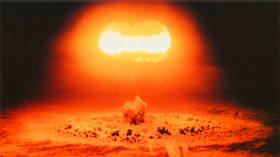Saudi Arabia is on the brink of losing control of oil markets
Saudi Arabia is tackling a deepening deficit, an international green transition drive that seeks to make its main export commodity obsolete and a number of powerful rivals on the international oil markets.
When earlier this month Saudi Arabia served “a wonderful surprise” to oil markets in the words of its energy minister, oil prices jumped up. After all, the Kingdom said it would cut an additional 1 million bpd from its oil output to keep prices higher. But then Iran started ramping up its production, eyeing a rebound in exports to more than 2 million bpd. Prices were quick to fall. What’s next for OPEC’s leader?
The outlook for oil demand remains pessimistic, according to the International Energy Agency. In that sense, Saudi Arabia’s decision to further cut production was the right thing to do. However, lower production means lower exports, and lower exports mean lower oil revenues.
The latest data, for November, shows that Saudi exports took a dive of more than 25 percent, to some $15.5 billion from $21.54 billion a year ago. But oil exports specifically did a lot worse, dropping by almost 40 percent on the year in November.
To be fair, the oil demand outlook has somewhat improved since November, what with all the vaccines against Covid-19 that are being rolled out. These lent support to prices and consequently to Saudi Arabia’s budget. The optimism, however, began to fade as it became clear the rollout will not happen as quickly as hoped. But just as benchmarks began to retreat, the wonderful surprise came from Riyadh to reverse the fall.
As is often the case whenever Saudi Arabia and OPEC cut production, there has been talk that US shale producers might take advantage of this to boost their own output, undermining the cartel effort. For now, it seems US shale drillers are too cautious to start boosting production at pre-pandemic rates. Prices are higher, but nobody knows how long they will remain higher. So, shale drillers are hedging their future production at current prices rather than rushing to add rigs.
Also on rt.com US shale could be the biggest winner of the latest OPEC cutsAnd yet this may change and before too long. Earlier this month, the head of the IEA, Fatih Birol, remarked that a lot of shale oil is profitable at current prices. Cautiousness may be in order, but shale drillers have debts to pay down, which might force some to boost production as it did after the last price crisis.
Meanwhile, one of the world’s largest importers of oil is complaining about the “whatever it takes” approach employed by OPEC. India does not want higher oil prices, not when it imports more than 80 percent of the oil it consumes. A lot of it comes from Iraq, but Saudi Arabia is the country’s second-largest supplier of crude, which makes it a key market. And yet, the Kingdom recently lifted its official selling prices for this key market and others in Asia.
The “whatever it takes” approach has worked well in the past, up to a point. After that point, it starts working against its originator. Saudi Arabia is tackling a deepening deficit, an international green transition drive that seeks to make its main export commodity obsolete, and it faces a potential full return of its archenemy Iran on the international oil scene. There aren’t many options.
Economic diversification is still on the table, of course. The Vision 2030 plan of Crown Prince Mohammed is still active, with the latest update on it regarding the futuristic NEOM project, worth $500 billion, that will feature a smart city that is emissions-free. The price tag of the city: $100-200 billion. Meanwhile, however, Saudi Arabia commissioned zero solar projects last year.
Plans were to commission over 1 GW in new capacity as the Kingdom works to hit its own ambitious renewable energy targets. Yet none was actually built because Riyadh tried to renegotiate the price tag of the project with its developer, leaning on dropping solar tariffs in the region, PV Magazine’s Max Hall reported earlier this month.
At the same time, the Kingdom’s sovereign wealth fund, the PIF, has plans to invest $40 billion annually in domestic projects in a bid to prop up the ailing economy. That would compare with $15.5 billion invested in 2019, according to the Financial Times. The PIF has some $400 billion in reserves. Its governor, Yasir a-Rumayyan, told the FT that the fund will rely on a mixture of its own equity, loans, and bonds to finance all the projects it has in mind. The official narrative is that there is money for all the projects. Analysts, however, doubt that.
Also on rt.com Time for record global oil demand may have already passed, Russia says“It’s very difficult to see how the money stretches out, not only to go into Neom but into all the other megaprojects and ambitions they have,” one analyst told the FT. “If they get to half of what they are expecting, great. But at the moment, there’s a credibility gap between what is being said and what is being done.”
So, demand for Saudi Arabia’s main export product remains weak, and this may become a long-term trend if green transition efforts are successful. Competition is intensifying, meanwhile, and economic diversification is proving to be more challenging than the architect of Vision 2030 may have initially thought. There isn’t a whole lot the Kingdom could do in these circumstances. In fact, the only sensible thing it can do is keep the restraints on its production. A reversal of the restrain approach will certainly hurt Saudi Arabia’s rivals in the oil market, but it may just hurt it more.
This article was originally published on Oilprice.com















